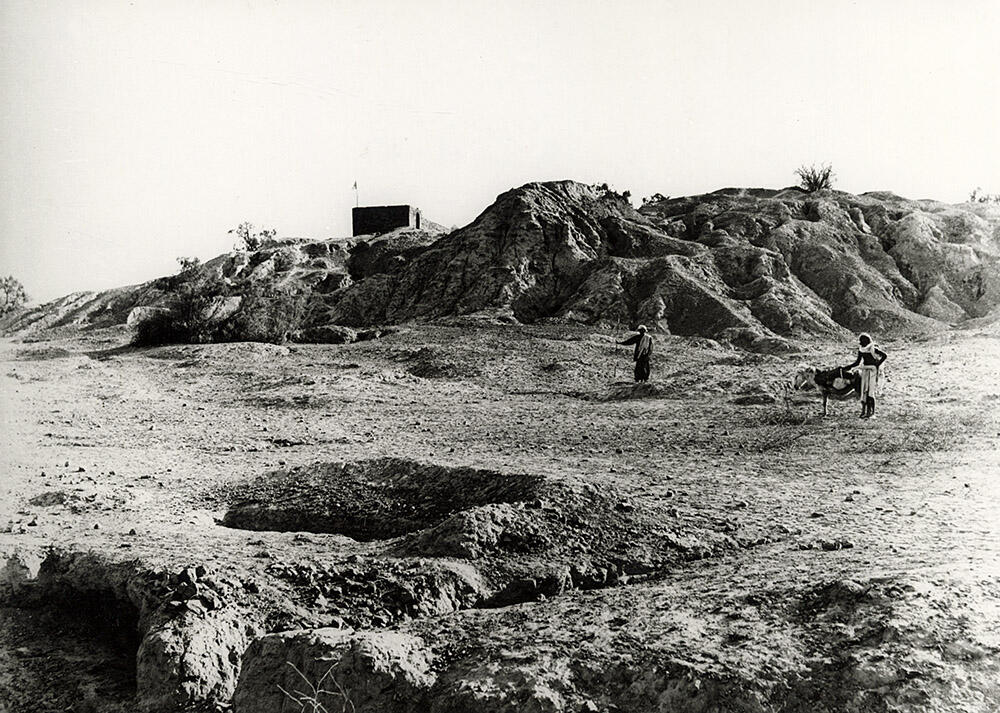Next to the excavations on Trench A, Mound F, in 1921 Sahni also cut into Mound AB, under the remnants of a mosque that once stood on top of the mound and the tomb of a holy man which still stands and is visited today.
"Of the mound marked A, B, C in General Cunningham’s plan (Plate VIII, Photo. No. 2742 [above]) only a small area measuring 55' x 25' situated to the west of the Naogaza tomb was excavated. The ancient wall 11 feet high, which is partly visible underneath the north wall of the tomb, has been referred to above ['where an old stout wall underneath the Naogaza tomb raised hopes of the existence of some important brick monument']."
- Daya Ram Sahni, Annual Progress Report of the Archaeological Survey [of India], Hindu and Buddhist Monuments, Northern Circle for the Year Ending 31st March 1921, p. 9-10.
"Due south of Mound F, and across the village road going west to the hamlet the highest of all the mounds at Harappa of Hafiz Bullah, stands Mound AB— (PI. I). Roughly, it is a parallelogram in shape, measuring some 1,450 ft. from north to south by 800 ft. from east to west. It rises quite abruptly above the surrounding plain, the contour lines, as will appear from the site plan (PI. I), following one another in quick succession along the slopes on all sides. Elsewhere at Harappa, such steep slopes are found only on Mound E. Crowning its north-east edge, and orientated from north to south, is the tomb of a Muhammadan saint named Nur Shah, constructed of bricks extracted from the ancient ruins. This tomb, enclosed by a brick wall, is 46 ft. long and 3 ft. 6 in. broad. From its size, it is known as the tomb of Naugaza,1 literally a man nine yards in stature. Not far from this, but at a higher level and apparently to the west, General Cunningham reported that he traced the remains of flights of steps on it by General both the eastern and western faces of this mound, as well as the basement of a large square building.2 As none of these remains now exist it may be that they were dug away, after Cunningham’s time, for the sake of their bricks.
- Madho Sarup Vats, Excavations at Harappa, 1940, p. 136.
"This view of the mound shows the northeastern mudbrick bastion in the foreground and the tomb of the saint Baba Noor Shah Wali (Naugaza) to the left. The lack of vegetation on the bastion is due to the fact that it is solid mudbrick, but vegetation of the rest of the slope has been removed due to grazing animals and cutting of firewood. A view of the mound from almost the same position today shows the natural vegetation growth in the eroded areas and lower slopes since the mound is now protected and no one is allowed to cut any plant growing on the mound."
- Jonathan Mark Kenoyer, 2021.
1. The word Naugaza is also interpreted by some people as Naughazi or new victor in the cause of Islam.↩
2. C. S. R., Vol. V, p. 106.↩
[Appendix D] 2742 Mounds A. B. General View from north.
[Original caption: General view of mound A.B. from North]

